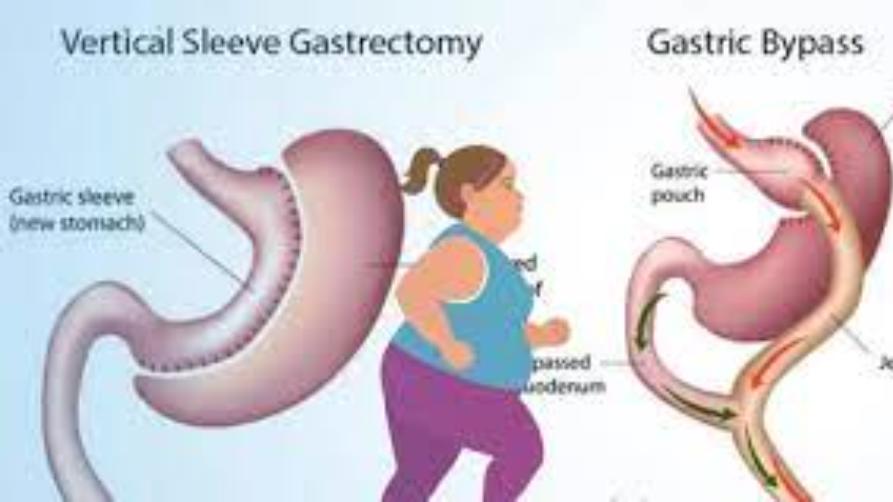Obesity has become one of today's common health problems due to the change in eating habits and the increased consumption of fast food. In this context gastric bypass application has also started to be used frequently in bariatric surgery. People resort to various methods to solve obesity problems. Gastric bypass is one of the most frequently used methods to solve obesity problems. It has the feature of being the most applied obesity surgery method in the USA and many European countries.
What is Gastric Bypass?
Roux-en-Y Gastric bypass surgery, also known by its name, helps to restrict food intake. In addition, it causes changes in intestinal functions. It has the feature of being a bariatric surgery method that helps to reduce nutrient absorption. Bariatric surgery is a general definition that covers morbid obesity treatments.
gastric bypass surgery In the process, the processes of changing the structures of the stomach and intestine are performed. As a result of the reduction of the stomach volume, food intake is restricted and there is a decrease in nutrient absorption with the change in the intestinal structure.
How is Gastric Bypass Surgery Performed?
Gastric bypass application is done in two stages. In the first stage, the stomach is separated so that the upper part is small and the lower part is large, and in this way, the food is collected in a small part. The small part of the stomach has only 28 grams of weight. In this way, despite the fact that patients eat less, the feeling of fullness becomes faster.
In the second stage, bypass operation, also known as bridging, is performed. In this way, a structural change occurs in the small intestine. By shortening the small intestinal tract, much less absorption of nutrients is ensured. By bypassing the first part of the small intestine, the small section formed in the stomach and the lower part of the intestine are connected. The food eaten is first filled into the small pouch in the stomach and then goes to the second part.
General Recommendations After Gastric Bypass Surgery
● After gastric bypass surgery To prevent dehydration, you should consume at least 1,5-2 liters of fluid per day. (with at least 6-8 glasses of water a day)
● If you do not consume enough water, headache, dizziness, nausea, weakness, white sores on the tongue and dark urine, etc. you may encounter situations. Remember that your water consumption is also very important for your kidney health!
● You should not take large amounts of water and other liquids at once. Throughout the day, you should drink frequent sips and sips at least 20 minutes before and at least 30-45 minutes after meals.
● Fluid, especially the first 2 weeks 3-4. You should consume pureed foods between weeks. 5-6. You should prefer soft foods for the week, and after the 6th week, you should switch to solid foods.
● Consume the food you eat by chewing slowly and thoroughly for at least 25 minutes at each meal.
● Avoid simple sugars (granulated/custard sugar, sweets, candies, etc.)
● The food you will consume should be neither too hot nor too cold. You should consume it at room temperature.
● Stop eating after you feel full!
● Exercise after gastric bypass you should. One of the key points of losing weight is physical activity. Light-moderate walking should be added for the first 6 weeks, and strenuous movements should be added in addition to walking for 6-8 weeks.
Diet Program After Gastric Bypass Surgery
Step 1: Liquid food for the first 2 weeks
Step 2: Food porridge for the next 2 weeks
Step 3: Soft foods for the next 2 weeks
Step 4: Solid foods from week 6 onwards. Healthy food rich in protein and low in calories
STAGE 1
Gastric bypass operation Foods you can consume in the first 2 weeks after:
• Broth (lemon can be squeezed)
• Chicken broth (lemon can be squeezed if it's too thick)
• Skim (diet) milk
• Grain-free, pulp-free, water-thick, low-calorie soups (such as vegetable/yogurt soup or chicken soup)
• 1 glass of apple or pear juice
• Hot unsweetened light tea, Linden tea
• Grain-free compote/chop sugar-free
• Homemade buttermilk
• Vegetable juice (consume diluted)
• Whey protein …..take care to use what your doctor and dietitian recommend.
Protein shake: Mix 2 cups of lactose-free or light milk and 1 scoop of whey protein homogeneously. Try to consume the mixture you get in portions throughout the day.
MENU EXAMPLE:
Hour Minimum Amount of Nutrients
8.00-09.00 2 glasses of Laktozsus or Light milk, Protein Shake (1 glass)
11.00-12.00 2 glasses of plain soy milk, light tea/linden tea, apple, cherry juice, mineral water
12.00-14.00 2 cups Grain-free strained chicken broth, strained broth, Protein Shake (1 cup)
15.00-17.00 2 glasses of seedless compote (without sugar), Seedless vegetable soup, Homemade buttermilk, mineral water (without gas)
19.00-21.00 2 cups Grain-free strained chicken broth, strained water, grain-free tarhana soup, Protein Shake (1 cup)
21.00-22.00 2 glasses 1 glass Apple juice, 1 glass of linden tea
22.00-23.00 1 glass of Mineral water (without gas)
Stage 2
WEEKS 3 AND 4: PUSHED FOODS After 2 weeks, you can slowly start consuming soft pureed foods.
Food should be cut into pieces with a fork and crushed. Your food choice should be as protein-calcium-based as possible. For soft watery foods (purées), you can achieve this by cooking your meals in real meat and chicken stock and blending them with purees.
Foods You Can Consume in the Third and Fourth Weeks
(In addition to the first two weeks)
• Milk eggs
• Eggs with cheese (boiled until mashed)
• Fat-free yoghurt, Curd cheese (without salt)
• Fruit puree (can be mixed with milk or yoghurt) - Except Orange and Mandarin !!!
• Vegetable puree, Spinach puree, Purslane puree, Pumpkin puree, Leek puree
• Mashed tuna/steamed salmon
• Lean Meat and Chicken Puree (thigh thigh)
• Kefir, probiotic yogurt (Danone activia, Sütaş Yovita)
• Custard, Kaskul and pudding for dessert
• Whey protein 1 scoop/day
STAGE 3
Soft Foods:
•Gastric bypass procedure After the 5th week, you can switch to diet products rich in protein and low in calories step by step.
• Adequate protein intake should be ensured every day.
• Foods that you can tolerate should be taken little by little and slowly.
• Losing weight Low fat, low calories and portion control is our motto for a diet that fits your goals.
During this time you can/should consume these additionally:
• Vegetable dishes with minced meat
• Shellless Menemen
• Feta cheese varieties - low fat
• Purslane with Yogurt/Spinach with Yogurt
• Stewed chicken with vegetables / sautéed chicken / sautéed meat / sautéed mushrooms
• Fish at least 2 times a week (no frying)
• Juicy meatballs/coated meatballs
Stage 4
At least 6 weeks have passed after surgery. There are no forbidden foods during this period. Vomiting may occur when you first start certain foods. You can delay consuming that food for a few days and try consuming it again.
• It is necessary to minimize the consumption of soup during this period. The priority foods should be foods with high protein content.
• In addition to soft nutrition, grilled meals cooked without water can also be preferred.
• During this period, grilled meatballs/Turkish delight meat/grilled chicken or fish can be added to the soft diet.
• You do not need to use your protein powder unless your doctor and dietitian have additional recommendations!
You can try to eat large pieces of meat such as chicken, cubed meat, steak, chops by chewing them well. From this period, rice, bulgur and buckwheat can be eaten (overcooked).
Gastric Bypass Surgery in Turkey
Gastric bypass surgery in Turkey is extremely affordable due to the high foreign exchange rate. For this reason, those coming from abroad can easily have this surgery in Turkey. The success rates of surgeries performed in well-equipped hospitals by specialist surgeons are high. gastric bypass surgery in Turkey You can contact us for












Leave a Comment